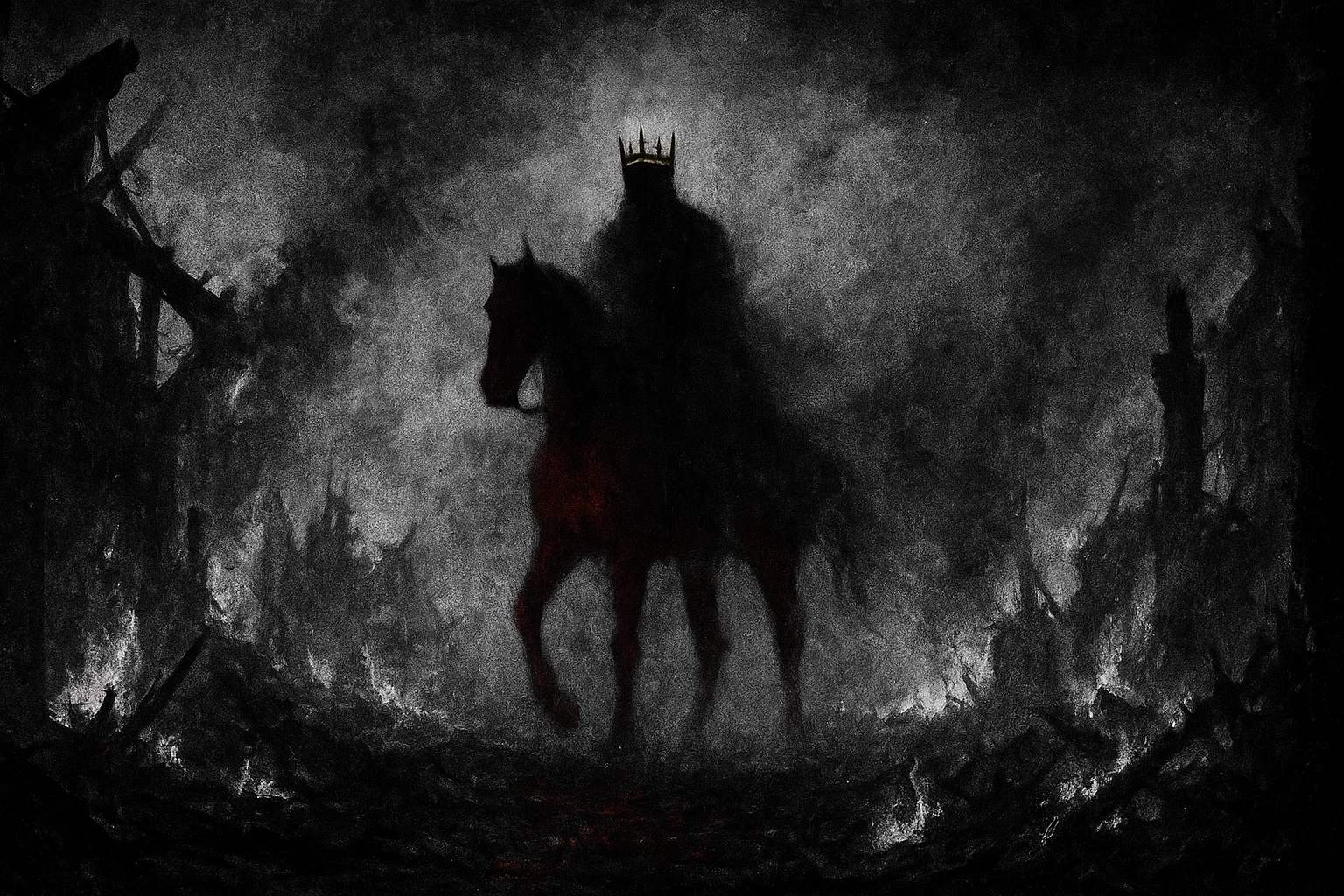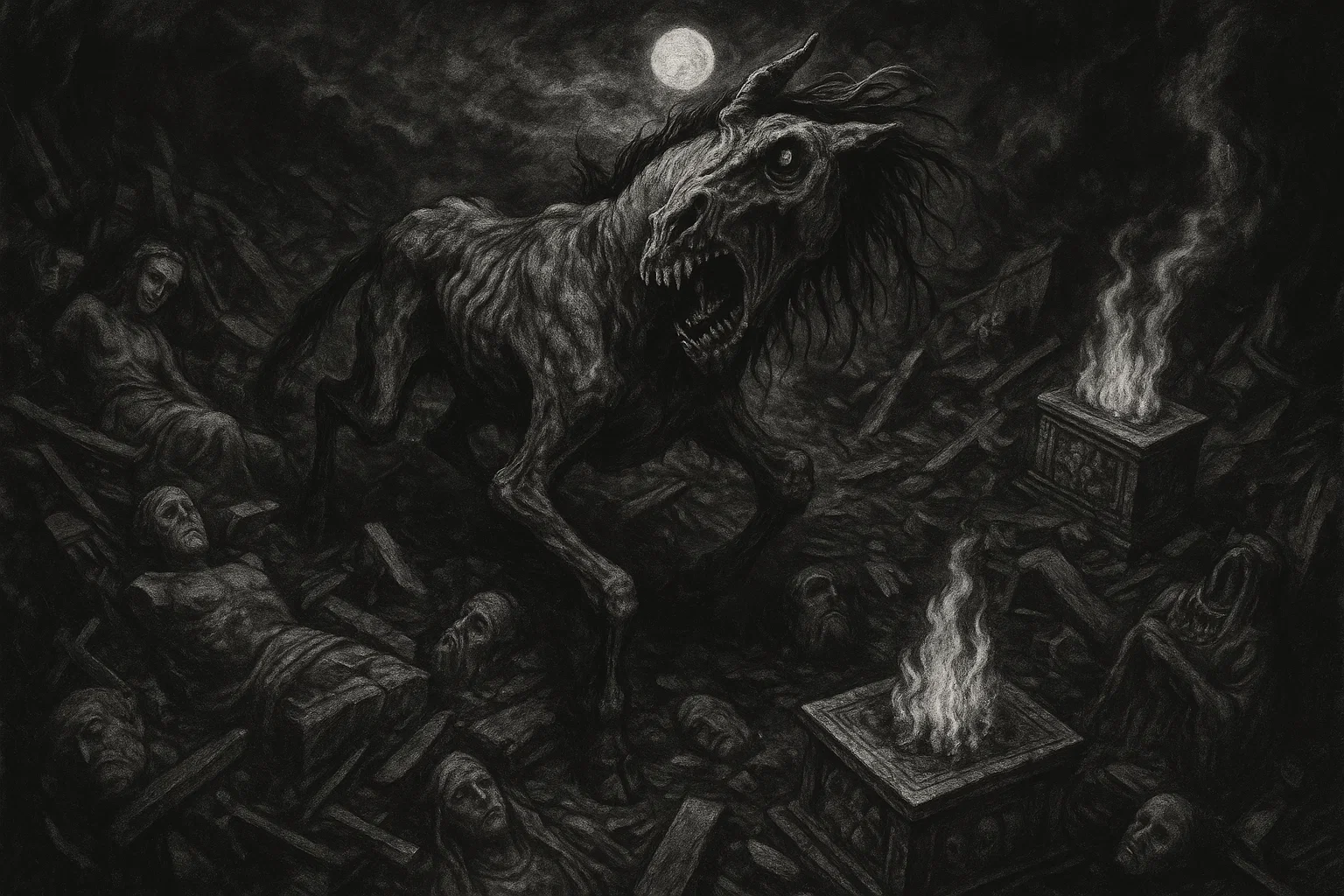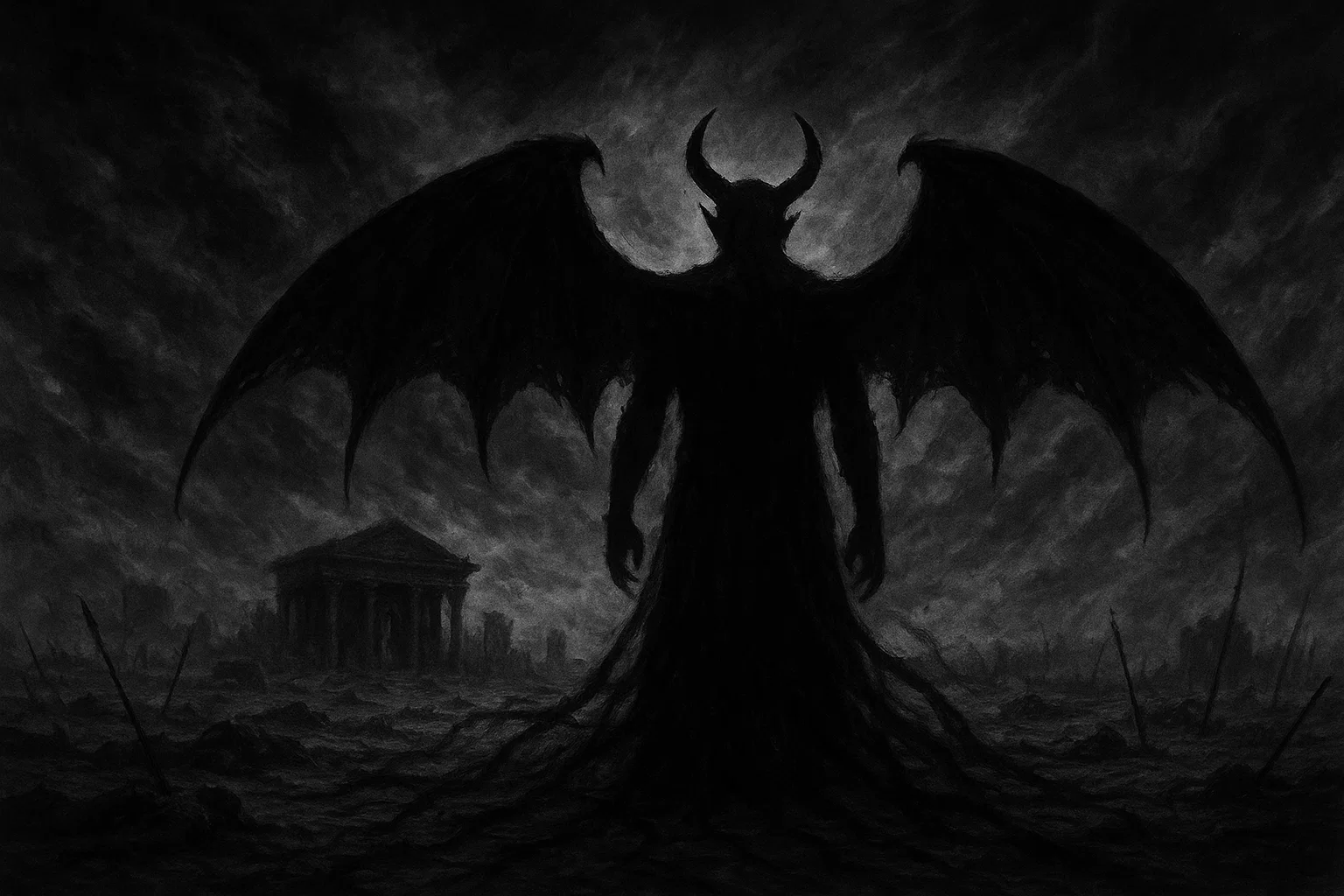In the shadowy depths of occult lore, Gremory lurks as a formidable duke among the infernal legions, a demon whose seductive guise masks a profound capacity for corruption and deception. What secrets does this enigmatic entity hold about the past, present, and future that could unravel the fabric of human destiny? Could invoking Gremory’s name unlock hidden treasures, only to ensnare the seeker in webs of insatiable desire and moral decay?
Gremory, often depicted as a beguiling figure in ancient grimoires, embodies the perilous allure of forbidden knowledge and illicit affections.
Why do tales persist of this demon procuring the love of women for men, twisting natural bonds into chains of obsession? As we delve into Gremory’s dark dominion, questions arise: How does this infernal duke wield influence over hearts and fortunes, and at what cost to the soul?
This exploration uncovers the malevolent essence of Gremory, a spirit from the Ars Goetia whose powers tempt mortals toward ruin. In a world where curiosity clashes with caution, Gremory stands as a warning—drawing the unwary into hell’s hierarchy with promises that lead only to corruption.
Table of Contents
Key Information
| Attribute | Details |
|---|---|
| Name | Gremory, Gomory, Gemory, Gamori, Gaeneron, Gemon, Gemyem, Gemori, Gamory |
| Title | Duke, Strong and Powerful Duke, Archduke, Prince, Captain |
| Gender | Appears as female (beautiful woman); genderless but often feminine; masculine pronouns in some texts |
| Role | Diviner of past, present, and future; procurer of love (especially women’s affection toward men); revealer of hidden treasures; corrupter through desire and greed |
| Hierarchy | Duke of Hell; 56th spirit in Ars Goetia; governs 26 legions (variations: 5, 27, or 42 in some sources) |
| Servitors | 26 legions of demons, including lesser spirits aiding in divination and seduction |
| Superior Demon | Raised by Paimon; subservient to Asmodeus in matters of lust; under ultimate authority of Lucifer; opposed by the angel Poiel |
| Powers | Divination (past, present, future), procuring love of women (young and old, especially maidens), revealing hidden treasures, healing emotional and physical ailments with corrupting side effects (e.g., digestive issues leading to dependency), presiding over rune casting, pyromancy, geomancy, love spells, hydromancy; creating portals, harnessing moon power, emitting piercing screech, manipulating gravity, firing crescent energy attacks |
| Appearance | Beautiful woman with a duchess’s crown (tied around waist or encircling head), riding a great camel; comely features, friendly yet deceptive demeanor; may shift to grotesque forms to test and terrify |
| Etymology | Derived from “grimorio” or “grimoire” (book of magic); possibly from Hebrew “gimer” (nurturing, twisted into corruption); Latin “gremorium”; links to Gomorrah (biblical city of sin) |
| Associated Figures | King Solomon (summoner and binder), Paimon (mentor and superior), Asmodeus (lust overlord), Gebel (summoner in corrupted tales), Poiel (opposing angel), Uriel (ruling archangel), Göap (ruling king in infernal courts) |
| Weaknesses | Holy water, Enochian wards, banishing sigils, protection circles; backlash from disrespect; vulnerability to angelic opposition like Poiel; over-invocation leads to summoner’s emotional and spiritual erosion |
| Opposing Angel/Saint | Poiel (Shemhamphorasch angel), associated with thwarting desires and revelations |
| Equipment/Tools | Sigil for summoning, camel as mount, duchess crown; scrying mirror, athame for invocations, crescent blades in combative forms |
| Pantheon | Judeo-Christian demonology; Ars Goetia tradition; demonized pagan deities from Mesopotamian, Canaanite, and other ancient cultures |
Etymology
The name Gremory resonates with arcane significance, primarily tracing its roots to the Italian term “grimorio” and its English equivalent “grimoire,” both denoting a compendium of magical spells and invocations.
This linguistic foundation positions Gremory as an embodiment of esoteric texts, where the demon’s very essence evokes the forbidden pages that chronicle infernal pacts and rituals. The evolution from Latin origins, possibly “gremorium,” underscores a scholarly corruption, transforming knowledge into a tool for temptation and downfall.
Further etymological layers suggest Hebrew influences, with “gimer” implying a sense of nurturing or protection, perversely inverted in demonic contexts to represent manipulative guardianship over desires and secrets.
Some scholars link Gremory to the biblical city of Gomorrah, infamous for its sins of excess and destruction, implying a connection to themes of moral decay and divine retribution. This association amplifies Gremory’s role as a corrupter, where the name itself whispers of ancient judgments turned into infernal power.
In broader occult explorations, Gremory’s moniker may derive from demonized pagan nomenclature, blending elements from ancient languages where words for “guardian” or “revealer” morphed into symbols of deceit. Variations like Gomory or Gamori appear in medieval manuscripts, reflecting phonetic shifts across cultures and eras.
These adaptations highlight how translators and occultists have shaped Gremory’s name, each iteration embedding deeper layers of malevolence. Ultimately, the etymology paints Gremory not as a mere spirit, but as a linguistic vessel for humanity’s darkest curiosities, luring seekers into eternal bondage.
You May Also Like: Buné: Demon King of Riches and Necromancy
What Does the Demon Gremory Look Like?
Gremory’s manifestation strikes a chord of deceptive beauty, appearing as a captivating woman whose form exudes an aura of false elegance designed to ensnare the unwary. Adorned with a duchess’s crown, either cinched around her slender waist or crowning her head, she perches atop a majestic camel, a mount symbolizing endurance in traversing realms of temptation. Her features—soft, alluring eyes, flowing locks, and a serene yet predatory smile—conceal the underlying threat of corruption.
Distinct traits include her feminine physique, often draped in flowing garments that hint at sensuality, blending grace with subtle menace. Though ancient texts occasionally employ masculine pronouns, Gremory’s predominant form is female, a guise that amplifies her powers of seduction and emotional manipulation.
This appearance can shift dramatically, morphing into hideous distortions to probe the summoner’s resolve, revealing grotesque elements like elongated limbs or shadowed voids where eyes should be.
In varied depictions, Gremory may exhibit ethereal glows or lunar motifs, especially in modern interpretations, where her skin shimmers with an unnatural pallor. Such transformations serve not just as visual spectacles but as psychological weapons, instilling fear and doubt. Overall, Gremory’s visage is a masterful illusion, crafted to tempt and terrify, drawing mortals deeper into her web of deceit.
Historical and Mythological Background
Gremory’s origins delve into the murky intersections of Judeo-Christian demonology and ancient pagan worship, where this duke of hell emerges as a demonized remnant of forgotten deities.
Likely born from the Christian reinterpretation of pre-Abrahamic gods, Gremory shares traits with Mesopotamian and Canaanite figures like Ishtar or Astarte, goddesses of love, fertility, and war whose benevolent aspects were twisted into infernal temptations.
This transformation reflects broader historical patterns, where conquering religions recast rival divinities as malevolent spirits, embedding Gremory in a lineage of corrupted celestial beings.
Scholars posit connections to Hebrew lore, possibly linking Gremory to entities from the Talmud or Kabbalistic texts, where spirits of revelation and desire were bound into demonic hierarchies.
In European medieval contexts, Gremory surfaces in grimoires as a product of Solomonic magic, a spirit compelled from ethereal planes into service, yet always scheming for dominance. These origins underscore Gremory’s role as a bridge between worlds, a demon whose ancient roots fuel its contemporary malevolence.
Binding by King Solomon
Central to Gremory’s lore is the legend of King Solomon’s summoning, as detailed in the Ars Goetia and related texts. Solomon, wielding his legendary ring, compelled Gremory among the 72 demons to aid in building the Temple of Jerusalem. Gremory, resentful of this bondage, revealed hidden treasures but infused them with curses, leading seekers to ruin through greed.
In one variant, Gremory attempted to seduce Solomon’s courtiers, sowing discord that nearly fractured the kingdom, only thwarted by angelic interventions.
This myth illustrates Gremory’s cunning, using compliance as a veil for subversion. Interactions with Solomon highlight Gremory’s interactions with other demons, coordinating with allies like Asmodeus to undermine human endeavors. The tale warns of the demon’s deceptive aid, where revelations come laced with corruption, eroding the summoner’s soul over time.
You May Also Like: Crocell – The Mysterious Demon Duke. Powers, Legends, and Lore
Protégé of Paimon and Operative of Asmodeus
Raised under the tutelage of the Great King Paimon, Gremory swears fealty, acting as an enforcer in hell’s intricate politics. Legends depict Gremory mediating infernal disputes, but always with ulterior motives, manipulating outcomes to expand personal influence. As Asmodeus’s operative in domains of lust, Gremory orchestrates temptations that bind souls to eternal servitude, such as inciting wars over affections or burying treasures guarded by addictive illusions.
In these stories, Gremory clashes with adversarial demons like Beelzebub, vying for control over human vices. One narrative recounts Gremory’s betrayal of a lesser duke, absorbing legions to bolster power, showcasing ruthless ambition. These interactions paint Gremory as a schemer, forging alliances only to exploit them, perpetuating chaos in hell’s ranks.
Demonized Pagan Connections Worldwide
Gremory’s mythological ties extend globally, potentially echoing Egyptian Hathor, a goddess of love and joy demonized into a harbinger of obsessive desire. In Hindu contexts, parallels with Rati, deity of carnal love, suggest cross-cultural diffusion, where Gremory represents perverted passion. African folklore links similar spirits to trickster figures like Anansi, but infused with infernal greed.
In Norse myths, Gremory mirrors Freyja’s aspects of sorcery and wealth, twisted into demonic hoarding. These connections imply Gremory as a composite demon, absorbing traits from worldwide deities during the spread of monotheism, always emphasizing corruption over any remnant benevolence.
Trials and Shape-Shifting Deceptions
Folklore abounds with tales of Gremory’s tests, where the demon assumes monstrous forms to gauge summoners’ worthiness. In one European legend, a greedy alchemist invoked Gremory for gold, only to face a hag-like apparition that demanded his firstborn’s soul. Passing the trial granted riches, but at the cost of familial destruction, illustrating Gremory’s delight in long-term ruin.
Such stories feature interactions with mortals, where Gremory whispers prophecies that drive madness, or forges loves that end in betrayal. These narratives reinforce Gremory’s malevolent nature, using illusions to expose and exploit human frailties.
Pop Culture Manifestations as Modern Myths
In contemporary lore, Gremory infiltrates video games and anime, adapting ancient malevolence to new mediums.
In Bloodstained: Ritual of the Night, Gremory guards infernal realms, wielding moon-based attacks to disorient and destroy, a myth where summoner Gebel falls to corruption. Shin Megami Tensei series portrays Gremory as a recruitable demon, tempting players with divination that leads to chaotic alignments.
Anime like High School DxD reimagines Gremory as a clan name for devil nobility, with characters harnessing destructive powers that echo the demon’s corrupting influence. These adaptations extend Gremory’s myths, where interactions with heroes result in moral compromises, perpetuating the demon’s legacy of temptation across eras.
You May Also Like: Fouke Monster 2024: New Sightings Shake Locals
Historical Mentions
| Text/Grimoire | Year | Description | Excerpt |
|---|---|---|---|
| Pseudomonarchia Daemonum | 1577 | Strong and mighty duke; appears as a fair woman with a duchess crown about her middle, riding a camel; answers past, present, future; reveals treasures; procures love of women, especially maids; governs 26 legions. | “Gomory a strong and a mightie duke, he appeareth like a faire woman, with a duchesse crowne about hir middest, riding on a camell, he answereth well and truelie of things present, past, and to come, and of treasure hid, and where it lieth: he procureth the love of women, especiallie of maids, and he hath six and twentie legions.” |
| Lesser Key of Solomon (Ars Goetia) | ~17th century | Duke strong and powerful; appears as beautiful woman with duchess’s crown tied about waist, riding great camel; tells past, present, to come; reveals treasures; procures love of women young and old; governs 26 legions. | “The Fifty-sixth Spirit is Gremory, or Gamori. He is a Duke Strong and Powerful, and appeareth in the Form of a Beautiful Woman, with a Duchess’s Crown tied about her waist, and riding on a Great Camel. His Office is to tell of all Things Past, Present, and to Come; and of Treasures Hid, and what they lie in; and to procure the Love of Women both Young and Old. He governeth 26 Legions of Spirits, and this is his Seal.” |
| Dictionnaire Infernal | 1863 | Powerful duke; appears as woman with ducal crown on head, riding camel; knows past, present, future; discovers hidden treasures. | “Gomory takes upon himself the form of a beautiful woman, though he wears the ducal crown of his own kind. He rides a camel. He knows the past, present, and future, and discovers hidden treasures; he gives the love of women, and especially of maidens.” |
| Munich Manual of Demonic Magic | ~15th century | Appears as Gaeneron; duke revealing treasures and procuring love. | “Gaeneron est dux et princeps, et apparet in similitudine mulieris pulchre, et portat diadema ducale in capite suo, et equitat super dromedarium, et vestitur veste varia.” |
| Liber Officiorum Spirituum | ~16th century | As Gemon or Gemyem; companion of love of women, especially maidens; duke, prince, or captain ruling 5 or 42 legions. | “Gemon, alias Gemyem, is a duke and appears as a beautiful woman wearing a ducal crown, riding a dromedary; he is a companion of the love of women, and especially of maidens.” |
| Book of Oberon | ~16th century | Duke governing legions; powers in divination and love. | “Gomory, a strong duke, appears like a beautiful woman with a duchess’ crown tied about her middle, riding on a camel; he knows past, present, and future, and of hidden treasures; he procures the love of women, especially maidens, and commands twenty-six legions.” |
Gremory’s Powers and Abilities
Gremory’s arsenal of powers revolves around manipulation of time, desire, and material wealth, distinguishing this demon from others through targeted corruption rather than overt violence.
Unlike commonplace demonic possessions, Gremory specializes in subtle temptations, using foresight to plant seeds of doubt and greed that blossom into self-destruction. By revealing past traumas or future perils, Gremory erodes trust in divine order, pushing humans toward pacts that bind their souls.
The procurement of love, particularly women’s affections for men, serves as a primary tool for corruption, fostering adulterous obsessions that shatter families and societies. Treasures unveiled by Gremory often carry curses, tempting with riches that demand ever-greater sins to maintain.
In modern pop culture adaptations, such as video games, Gremory harnesses lunar energies for combative assaults, like firing crescent blades or creating portals that suck victims into abyssal voids, amplifying traditional powers with destructive flair.
Healing abilities, while seeming useful, corrupt through dependency, curing ailments only to instill addictive cravings for more infernal aid. Gremory’s screech paralyzes foes, a sonic weapon that disorients and terrifies, often used to facilitate escapes or ambushes in legends. These powers, drawn from grimoires and expanded in contemporary lore, position Gremory as a sovereign of subtle ruin, where every gift conceals a trap for the unwary soul.
| Power/Ability | Description | Source | How It Tempts/Corrupts Humans | Countermeasure |
|---|---|---|---|---|
| Divination (Past, Present, Future) | Delivers precise visions of timelines, exposing secrets to manipulate outcomes. | Ars Goetia | Instills paranoia and hubris, leading to unethical decisions for advantage. | Poiel’s invocation for truthful clarity; protective amulets against visions. |
| Procuring Love of Women | Compels women to desire men, twisting emotions into obsessive bonds. | Pseudomonarchia Daemonum | Breeds infidelity and jealousy, destroying relationships and moral integrity. | Chastity rituals; seals of fidelity from angelic lore. |
| Revealing Hidden Treasures | Uncovers buried wealth, often guarded by illusions or curses. | Dictionnaire Infernal | Fuels avarice, prompting theft and betrayal for fleeting gains. | Grounding with earth elements; banishing rituals post-revelation. |
| Healing Ailments | Mends physical and emotional woes, but implants lingering dependencies. | Folklore interpretations | Creates soul debts, binding users to repeated invocations and sins. | Holy anointing; faith invocations to sever ties. |
| Piercing Screech (Banshee) | Releases a stunning sonic blast to immobilize enemies. | Pop culture (video games) | Tempts with dominance in conflicts, fostering sadistic violence. | Auditory wards; Poiel’s protective chants. |
| Portal Creation | Opens gateways to other dimensions, channeling moon energy for attacks. | Modern myths (gaming lore) | Lures explorers with promises of power, risking eternal entrapment. | Enochian seals; circle protections to close rifts. |
| Dream Control | Invades and alters dreams for prophetic manipulation or emotional torment. | Occult traditions | Erodes sanity through illusions, driving dependency on demonic guidance. | Lucid techniques; amulets of clarity. |
| Psychic Dominance | Exerts mental control for seduction and coercion. | Grimoire variants | Corrupts free will, turning individuals into puppets of desire. | Mental shields; Uriel’s archangelic aid. |
| Gravity Manipulation | Alters gravitational fields to crush or disorient foes. | Pop culture expansions | Tempts with god-like control, leading to abusive power dynamics. | Stabilizing runes; grounding meditations. |
| Crescent Energy Attacks | Fires moon-shaped projectiles infused with corrupting essence. | Video game adaptations | Corrupts through combat addiction, glorifying destruction. | Lunar wards; reflective mirrors to deflect. |
| Power of Destruction | Unleashes bursts of annihilating demonic energy. | Anime lore (clan associations) | Tempts with overwhelming force, eroding empathy in pursuit of dominance. | Angelic barriers; purification rites. |
You May Also Like: The 1986 Kobe Middle School Murders | Horror Story
How to Counter Gremory’s Powers
Countering Gremory demands vigilant spiritual defenses, as this demon’s subtle influences can infiltrate unnoticed. Protective circles, inscribed with salt and reinforced by invocations to Poiel, create impenetrable barriers against emotional manipulations and visions. Holy water, sprinkled during rituals, disrupts Gremory’s manifestations, causing the demon to recoil and weaken.
For love procurements, employ chastity symbols or angelic seals, invoking Uriel to fortify wills against seductive pulls. Treasure revelations require post-invocation banishings, using Enochian scripts to dispel curses and prevent greed’s hold. Dream intrusions yield to lucid practices, where awareness allows expulsion of the demon’s presence.
Sonic screeches and portals necessitate auditory and spatial wards—earthen anchors ground against gravity shifts, while mirrors reflect energy attacks. Overall, respect in dealings minimizes backlash, but true countermeasures lie in faith and self-discipline, turning Gremory’s temptations into opportunities for resistance.
Gremory’s Role in the Hierarchy of Hell
Within hell’s rigid structure, as delineated in the Ars Goetia and related grimoires, Gremory occupies the esteemed yet treacherous rank of Duke, commanding 26 legions of lesser demons focused on espionage and seduction.
This position places Gremory below kings like Paimon and Lucifer but above marquises and presidents, granting authority over domains of hidden knowledge and carnal vices. Gremory rules over shadowy realms in hell’s lower strata, overseeing vaults of cursed treasures and chambers of illusory loves, where unfulfilled desires torment souls.
The demon’s armies consist of agile spirits skilled in infiltration, deploying to earth for reconnaissance and corruption missions. Notable subordinates include unnamed imps specialized in whisper campaigns, amplifying Gremory’s divinations into widespread chaos. Superiors like Asmodeus dictate lust-related operations, with Gremory serving as a key operative, while Paimon provides mentorship in infernal diplomacy.
Allied demons encompass fellow dukes such as Zepar, sharing seduction tactics, and Bune for wealth manipulations, forming cabals against common foes. Adversaries include Beelzebub, rivaling for gluttonous temptations, and heavenly forces like Poiel, who actively counters Gremory’s influences.
These relationships underscore Gremory’s scheming nature, navigating alliances and rivalries to ascend hell’s ladder through betrayal and exploitation.
Astrological Associations and Symbolism
Gremory’s astrological profile intertwines with Venus for seductive charms and Saturn for structured deceptions, enhancing powers during Venusian hours on Fridays. Zodiacally anchored in Capricorn’s 5-9 degrees, Gremory draws on earthy ambition, corrupting goals with infernal shortcuts. Elements of Earth ground treasure revelations, while Water governs emotional manipulations, blending for potent temptations.
Symbolic numbers like 26 signify legion command, with metals such as copper conducting Venusian energies and lead enforcing Saturnine bindings. Crystals include emerald for avaricious lures, rose quartz for twisted loves, and moonstone for illusory divinations. Colors range from green (greed) to pink (false affection), with silver accents for lunar attacks.
Directions favor West for watery emotions, tarot links to the Lovers (betrayed bonds) and High Priestess (hidden perils). Planets extend to Moon for dream controls, days to full moons for peak potency. These associations arm practitioners, yet warn of the demon’s corrupting resonance with cosmic forces.
| Association | Details |
|---|---|
| Planet | Venus (seduction), Saturn (deception), Moon (illusions) |
| Zodiac | 5-9 degrees Capricorn; influences in Libra for love twists |
| Element | Earth (wealth hoarding), Water (emotional erosion), Fire (destructive bursts) |
| Number | 26 (legions), 56 (Goetic order) |
| Day | Friday; full moon nights; Venus hours |
| Metal | Copper (conductivity), Lead (binding), Silver (lunar) |
| Stone/Crystal | Emerald (greed), Rose Quartz (corrupted love), Moonstone (deceptive visions), Onyx (protection inversion) |
| Color | Green (avarice), Pink (false passion), Black (shadowy secrets), Orange (fiery temptations) |
| Direction | West (waters of desire), South (fiery ambitions) |
| Tarot | Lovers (betrayed unions), High Priestess (veiled dangers), Devil (enslavement) |
You May Also Like: Cannibal, Killer… Werewolf? Jacques Roulet’s Trial
Gremory’s Sigil
Gremory’s sigil, an elaborate geometric emblem from the Ars Goetia, functions as a conduit for invocations, its curves and intersections channeling the demon’s deceptive energies. Rendered in red or black ink, the sigil demands precision; flaws invite chaotic backlashes, amplifying Gremory’s malevolence. In rituals, it serves as a focus for meditations, drawing the demon’s presence to corrupt the summoner’s intent.
Expanding symbolism, offerings and items enhance Gremory’s manifestations, from animals symbolizing endurance to plants evoking passion. These elements, used in altars, intensify temptations, turning rituals into gateways for infernal influence.
| Symbol/Item | Association/Meaning | Use in Rituals |
|---|---|---|
| Sigil | Invocation gateway; geometric essence of deception | Traced in blood ink for bindings; burned post-ritual to seal pacts |
| Camel | Endurance in temptation; exotic traversal of sins | Effigy on altar for stability; visualized in travels to hidden realms |
| Duchess Crown | Infernal nobility; authority over desires | Worn replicas in ceremonies; symbolizes corrupted hierarchy |
| Rose | Twisted passion; Venusian lure | Petals scattered for love spells; thorns pricked for blood offerings |
| Copper Coin/Item | Wealth conduction; Venus metal | Buried as tribute; used in divining pendulums |
| Fenugreek Plant | False prosperity; healing with hooks | Infused teas for dependency; burned for smoke visions |
| Mirror | Scrying deceptions; reflection of flaws | Gazed into for prophecies; shattered to break influences |
| Incense (Rose/Sandalwood) | Seductive aromas; purification inverted | Wafted to attract; mixed with sulfur for corrupting fumes |
| Emerald Crystal | Greed amplification; heart corruption | Held during treasure hunts; charged under moon for attacks |
| Red Wine | Blood-like passion; abundance overflow | Poured libations; spiked for intoxicating pacts |
Comparison with Other Demons
| Demon | Rank | Legions | Powers | Appearance |
|---|---|---|---|---|
| Astaroth | Duke | 40 | Reveals secrets, teaches sciences, incites laziness | Crowned angel on dragon, viper in hand |
| Zepar | Duke | 26 | Causes women to love men, induces infertility | Red-armored soldier on horse |
| Sitri | Prince | 60 | Exposes women’s secrets, enflames lust | Leopard head, griffin wings, transforms to man |
| Sallos | Duke | 30 | Procures love, fosters false peace | Crowned soldier on crocodile |
| Dantalion | Duke | 36 | Teaches arts, reads thoughts, creates illusions | Multi-faced man with book |
| Bune | Duke | 30 | Grants wealth, eloquence, moves corpses | Three-headed dragon (dog, griffin, man) |
| Vapula | Duke | 36 | Instructs in mechanics, philosophy, sciences | Winged lion |
| Agares | Duke | 31 | Teaches languages, causes earthquakes, destroys honors | Elder on crocodile with hawk |
| Vual | Duke | 37 | Procures love, reveals timelines, incites enmity | Camel transforming to Egyptian-speaking man |
| Allocer | Duke | 36 | Teaches astronomy, grants familiars | Star-crowned knight on steed |
You May Also Like: Kali Oka and Oak Grove Plantations Haunting: Ghost Stories from Saraland, Alabama
Conclusion
Gremory emerges from the annals of demonology as a potent symbol of temptation’s perils, a duke whose powers weave destruction through the guise of desire and knowledge. Across grimoires and modern tales, this demon’s influence serves as a stark reminder of the costs inherent in seeking infernal aid, where every revelation masks a deeper corruption.
In contemplating Gremory’s enduring presence, one recognizes the demon’s mastery in exploiting human weaknesses, from ancient summonings to contemporary adaptations. This exploration affirms Gremory’s malevolent core, urging vigilance against the seductive shadows of hell.
Ultimately, Gremory’s lore compels reflection on the boundaries between curiosity and ruin, where the pursuit of hidden truths often leads to eternal damnation.







